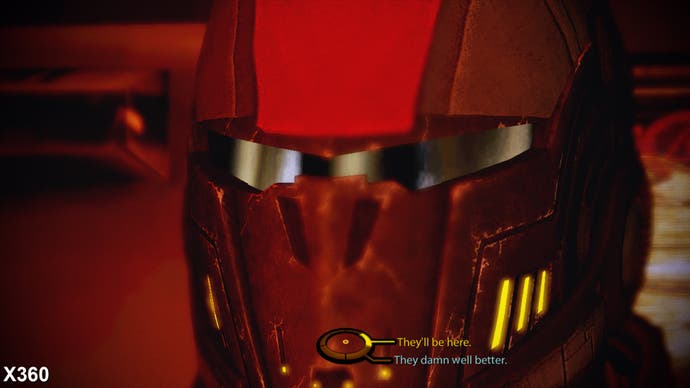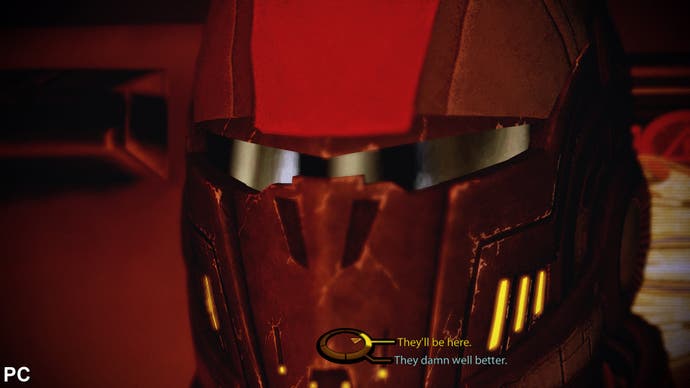Tech Analysis: Mass Effect 2
Adept.
There's a whole host of technological improvements across the board, compiled into the following video, but bearing in mind the performance profile of the first game one of the most important elements is overall stability, and the nigh-on complete elimination of texture-popping thanks to much-improved streaming tech. In common with most Unreal Engine 3 titles you might occasionally still see it, but it is now the exception rather than the rule.
In this video, we've tried as hard as possible not to show any situations or scenes that could spoil the plot of the game, but we are showing sections from throughout the whole game, so if you're in the slightest bit squeamish about this kind of thing you'd be advised to hold back and skip the movie.
General performance issues aside, the Mass Effect 2 engine is clearly far more at home rendering larger, more expansive open spaces, and also in populating them with more characters without the huge impact to frame-rate and v-sync that this had in the first game. It's also the case that BioWare's artists have really refined their skills in producing some extraordinary-looking alien worlds.
While the new worlds crafted here are a cut above what was seen before, in many cases they feel somewhat scaled back compared to the original game. It may well be nothing more than tighter game design, but there's also a sense that the improvements are pragmatic and performance-driven as well.
So, how about the PC game then? In common with many Unreal Engine 3 games, Mass Effect 2 on Xbox 360 produces overall image quality that is essentially identical to the PC version running at maximum settings. Just about the only noticeable advantage aside from clearly superior shadow filtering is that the computer version has the ability to ramp up anisotropic filtering up to 16x (as we did in our comparison).
This aside, running the game at 720p on both platforms produces an uncannily similar experience. As well as the video below, there's an old-skool 720p comparison gallery to check out for more detailed analysis.
Similar to the other recent Unreal Engine 3 "biggie", BioShock 2 (see our triple-format face-off elsewhere), Mass Effect 2 runs with no anti-aliasing on either platform. This is somewhat disappointing bearing in mind how easily enthusiast-level GPUs cope with just about any Unreal Engine game, and the only way to introduce edge-smoothing in the PC build is to invoke it via the hardware control panel.
In terms of the overall visual make-up, Mass Effect 2 is a game that is clearly designed with console as the target platform, although of course you can run the PC version at stupendously higher resolutions, and a far more stable frame-rate comes almost as standard even with a budget GPU like the NVIDIA GTS250, or the venerable 8800GT.
This presents both advantages and disadvantages to PC owners. Mostly it's good stuff: with PC hardware having progressed so much in the last few years, it means that anyone with a modern computer and a modest graphics card should be able to get console-beating performance.
On the minus side, those with bleeding-edge systems get more frames and more pixels than those playing on Xbox 360, but little else: those textures were designed for 720p. Sometimes they scale up beautifully, in other cases they don't. More than that, the geometry levels of the environments in particular can sometimes look basic on PC.
Regardless, here's how Mass Effect 2 looks when running the Xbox 360 version at 1080p output, up against the native resolution version on PC.






The extra performance offered by PC hardware certainly helps though. The frame-rate advantage is quite significant and not just in terms of eliminating the performance drops we see in the Xbox 360 version. It doesn't require a monster system to run Mass Effect 2 at 60 frames per second, and the overall consistency this gives to BioWare's stunning animation really can't be underestimated. Those cut-scenes look beautiful on both systems, but they move so much more smoothly and realistically on PC thanks to that additional temporal resolution.
Gameplay-wise, it is interesting to note that BioWare has stripped out support for the Xbox 360 controller on PC (BioShock 2 is similarly bereft), forcing the player to make use of the keyboard and mouse. This is clearly the control method of choice - the radial dial for choosing specialist ammo and abilities is replaced with a smoother, easier to use on-screen interface - but perhaps the most obvious improvement is in your marksmanship skills. Firing off headshots is immeasurably simpler with the keyboard and mouse. It's also the case that the circuit-breaking mini-game provides tougher time-limits, since mouse movement is so much faster than using the 360 pad.
If you have the choice to play Mass Effect 2 on either platform, those with well-specced PCs would be advised to check out the computer version. Smoother performance and easier-to-use controls give it the nod, but high-end PC gamers might have wished for a bit more in the way of bonus bling.
Many thanks to Hotcooler, Alex Goh and John Walker for their help with this piece.








